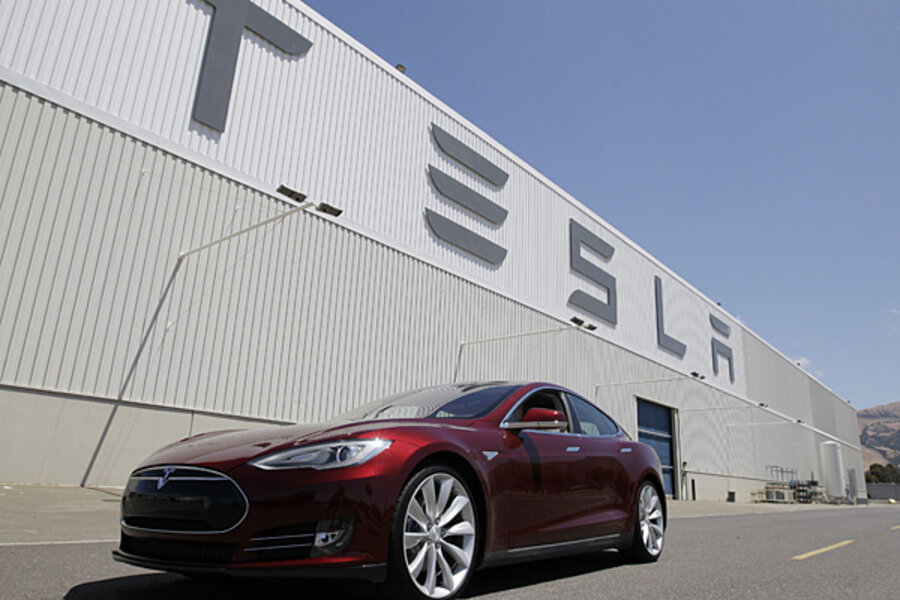Tesla Motors Model S fires: Another setback for electric cars?
Loading...
Like the Hummer once was, the Tesla is a status symbol (but for a different crowd). Considering its outrageous price tag, one would be hard-pressed to argue that it is a practical car for the masses. But that’s OK with me, because the Tesla is an ambassador for all electric cars through a process called “status by association” (which is what name dropping is all about). We are social primates… like it or not, status seeking is built into our genes.
On the flip side, it could harm the image of electric cars if this latest trend of catching on fire continues, or accelerates. I’ve looked into the statistics and have concluded that, to date, a significantly smaller percentage of Tesla’s catch on fire than conventional cars. Although, that could change with time. Two spectacular fires in almost as many weeks is not a good thing. A lithium fire with exploding batteries is something to behold and makes good copy. It’s also dangerous if the driver should be incapacitated. To date, no Nissan Leaf has caught fire. 35,000 Leafs have been sold in the U.S. compared to 15,000 Tesla Model S sedans. But that might change as well.
I’m also not convinced that Elon Musk is helping matters much with his personal appearances. In this videohe tells the interviewer that the batteries are protected by a quarter inch armor plate. Yet it still caught on fire. According to the numbers I ran, an armor plate that thick, large enough to cover the Model S battery, would weigh somewhere between 300 and 400 lbs (the equivalent of always carrying around three passengers). Assuming this “armor plate” really is that thick, the Tesla engineers were obviously quite concerned about their choice of battery chemistry and location under the car.
He claimed that only “a few” of the modules in the battery pack burned. If a fire that spectacular resulted from just a few of the 16 modules burning, just try to imagine what it would have looked like with all of them burning.
He appeared to be stifling a smile when discussing Boeing’s battery concerns. I can just imagine some Boeing execs toasting the fact that his second Model S just flamed on.
He said that if a gasoline powered car had hit the same road debris, it would have resulted in a conflagration that would have burned the car to the ground. Those Tesla fires certainly qualified as conflagrations and had the fire department not arrived on time, almost certainly, both would have burned to the ground.
Before his personal appearance, Tesla published a letter giving their version of what happened. It claimed that the fire was contained to the front section of the car by internal firewalls within the pack, insinuating that an incapacitated driver would have survived. The fact that the guy filming the first fire could feel the heat in the cab of his truck from 100 feet away suggests otherwise. I strongly suspect that had the fire department arrived a few minutes later, the fire would have been in the passenger compartment. Clearly, the film of the second fire shows the flames engulfing the passenger section. It said that “Vents built into the battery pack directed the flames down towards the road and away from the vehicle.” Apparently to little effect, I might add.
The note went on to blame the firemen for puncturing the firewall in an attempt to put the fire out which allowed the flames to vent upwards into the front trunk section, which is contradicted by what we see in the second video with the fire consuming half of the car.
It claims that the combustion potential of the Model S is only about 1% that of a gas tank, which, true or not, is utterly irrelevant when looking at those spectacular lithium fires. Energy released per unit time is what matters. Release enough energy in a short enough period of time and you have the definition of an explosion.
I’m not concerned that a Tesla will occasionally catch on fire after being damaged. I’m more concerned that their clumsy attempts to sugarcoat the accidents may turn against them.







